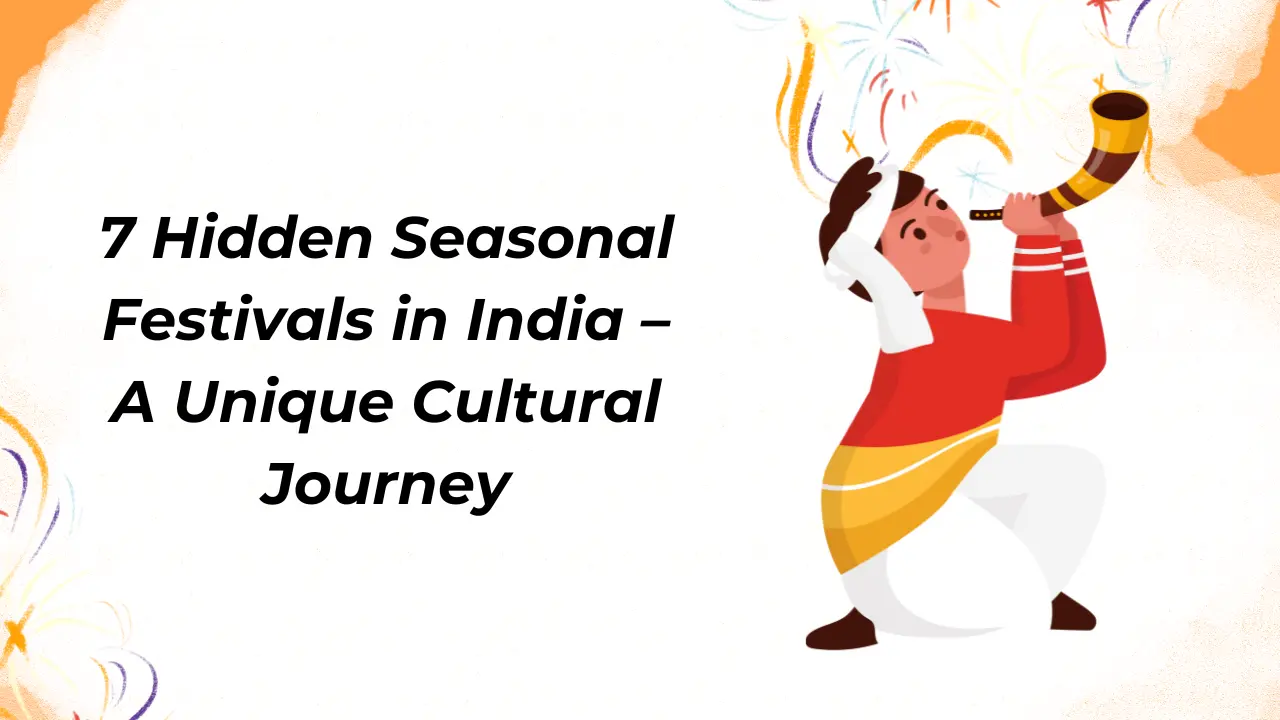India’s cultural calendar is overflowing with festivals, but beyond the famous ones, there are hidden gems celebrated in specific regions, steeped in local myths, natural cycles, and centuries-old traditions. These festivals are experiential journeys, giving you insight into India’s heart and soul.
1. Phool Dei – Uttarakhand’s Blossoming Blessing
What Makes It Unique: Unlike Holi’s riot of colors, Phool Dei is an intimate, community-based ritual marking the arrival of spring. Children go door-to-door spreading flower petals and rice, symbolizing prosperity.
Cultural Significance: Locals believe the flowers bring blessings for a good harvest and protection from negative energies. The festival connects agriculture, spirituality, and community in a subtle way, often unnoticed by outsiders.
Insider Tip: Participate in a village breakfast with locals—homemade herbal teas and buckwheat pancakes are traditional treats served only during Phool Dei.
2. Mopin Festival – Arunachal Pradesh
Origins & Myth: Celebrated by the Galo tribe, Mopin invokes fertility, prosperity, and the protection of crops. Ritual dances like Popir involve intricate steps that mimic agricultural cycles and ancestral stories.
Unique Experiences: Travelers can join the ceremonial sprinkling of rice beer, a sacred act believed to ward off evil spirits. Local artisans also demonstrate traditional weaving and handicrafts during the festival.
Why It’s Rare: Few outsiders attend because of the remote location, making it a once-in-a-lifetime cultural immersion.
3. Chithirai Thiruvizha – Madurai’s Royal Wedding of Gods
Historical Context: This centuries-old festival celebrates the celestial wedding of Goddess Meenakshi and Lord Sundareswarar. What most guides skip: the pre-dawn rituals in the temple sanctum, performed by priests, are secret ceremonies dating back generations.
Hidden Traditions: Only selected families participate in the processions carrying ritual torches. There are unique flower offerings and sacred chants not performed during other temple festivals.
Insider Tip: Arrange a visit with a local guide to witness the inner sanctum ceremonies, an experience that connects you with Madurai’s living history.
4. Nanda Devi Raj Jat – Uttarakhand Pilgrimage Festival
The Adventure Aspect: This festival involves trekking through the Himalayas carrying ceremonial idols. The trek spans remote villages and sacred trails.
Cultural Depth: Mini ceremonies in surrounding villages give visitors access to folk music, dance, and village feasts connected to the pilgrimage.
Local Myth: The festival traces its origin to the legend of Goddess Nanda Devi, protector of the mountains, who blesses villages with fertility and protection.
Travel Tip: Participate in village celebrations to experience rituals without the extreme trek, and document rare folk instruments like the dhol and tungna.
5. Chapchar Kut – Mizoram Bamboo Celebration
Unique Element: Celebrated before clearing bamboo forests for farming, locals perform folk dances on bamboo platforms with live music. This festival is a celebration of nature’s bounty, unlike mass urban festivals.
Cultural Insight: The dances mimic agricultural practices and animal movements, showing a deep ecological understanding embedded in local art.
Insider Experience: Travelers who are invited to dance or join the communal feast get authentic access to tribal life rarely documented online.
6. Phool Walon Ki Holi – Vrindavan’s Flower-Only Holi
Historical Roots: Unlike the common Holi celebrations, this festival uses only flower petals, continuing a centuries-old tradition started by the Mughal princesses.
Cultural Experience: Participate in early morning temple rituals when the flower showers are at their most breathtaking. Witness the devotion and joy of locals celebrating in a traditional, eco-friendly way.
7. Hornbill Festival – Nagaland’s Tribal Music Extravaganza
Beyond the Crowds: While Hornbill is well-known, the midnight tribal music sessions in surrounding villages are almost never visited by tourists. Traditional instruments like the log drum and bamboo flutes create a hauntingly beautiful atmosphere.
Pro Tip: Stay with a local host to experience these performances after official festival hours, giving you exclusive insight into Naga tribal culture.
How to Make Your Festival Journey Truly Unique
- Go Beyond Tourist Hubs: Popular cities show only the “surface” celebrations. The real magic happens in villages and small towns.
- Participate, Don’t Just Watch: Festivals are meant to be lived. Learn dances, help prepare offerings, or join local meals.
- Document Stories, Not Just Photos: Speak with elders and local performers—most of these stories are not online anywhere.
- Understand Symbolism: Each festival has hidden layers: myth, ecology, agricultural cycles, and social cohesion.
- Travel Smart: Remote festivals often have limited infrastructure; plan your logistics carefully.
Conclusion
Experiencing India’s lesser-known seasonal festivals is not just sightseeing—it’s a deep dive into the country’s living traditions, myths, and community rituals. From the quiet blessings of Phool Dei to the thrilling rhythm of Nanda Devi Raj Jat, each festival offers stories and experiences that are impossible to find elsewhere.
By traveling with curiosity, respect, and openness, you’ll discover India in its most authentic and enchanting form.

